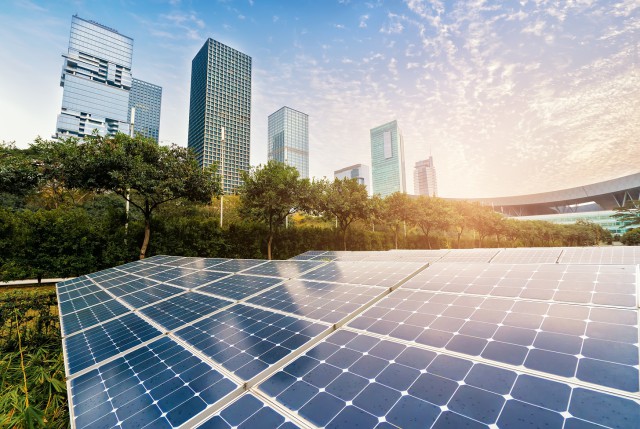The UK Green Building Council’s Net Zero Carbon Buildings Framework

The UK Green Building Council has released their framework for net zero carbon buildings. Beverley Quinn of TUV SUD talks us through it.
The UK Green Building Council’s ‘Net Zero Carbon Buildings: A Framework Definition’ provides the property and construction sector with clarity on the outcomes required for a net zero carbon building. It is intended to be used by building developers, designers, owners, occupiers and policy makers to inform the development of building tools, policies and practices that increase the uptake of net zero carbon buildings.
The framework has set out two definitions for net zero carbon buildings and the approach to demonstrate this status:
- Net zero carbon – construction
- Net zero carbon – operational energy
Net Zero Carbon - Construction
The carbon impacts related to the product and construction stages of a building are significant, in some cases accounting for half a building’s whole life carbon impact. Developers aiming for net zero carbon in construction should also design the building for net zero carbon for operational energy.
A whole life carbon assessment should be undertaken in line with the RICS Professional statement ‘Whole life carbon assessment for the built environment’ and be carried out in two phases:
- As early as concept design (RIBA Stage 2) and as a minimum before technical design (RIBA Stage 4). This ensures the assessment has the greatest potential to drive carbon reduction in all future stages.
- At practical completion (end of RIBA Stage 5) which should measure the as-built outcome, in place of modelled assumptions. This final assessment should be used to determine the extent of carbon impacts that must be offset to achieve net zero carbon.
The carbon can be offset by either a one-off payment at building completion or through net export of on-site renewable energy on an annual basis. Where on-site renewable energy generation is used to offset, the achievement of net zero carbon for operational energy should take precedence. Once net zero carbon for operational energy has been achieved, any surplus carbon credits from exporting on-site renewable energy can be used to offset embodied impacts. Assessments and related carbon offsetting should be audited by a third-party.
Net Zero Carbon – Operational Energy
The energy used in the operation of existing buildings represents the most significant carbon impact, contributing 30% of the UK’s total emissions in 2017.
The scope of net zero carbon for operational energy should be defined as: “all areas under operational control that have been used to demonstrate a net zero carbon balance”. The energy scope should also be disclosed to allow comparability between buildings.

Investing in energy efficiency and demand reduction is the most cost-effective way to minimise the new infrastructure that will be required to achieve a zero-carbon energy system. The building should target reductions in energy demand and consumption to reduce the amount of total electricity supplied, from both the grid and renewable energy sources.
The approach used to reduce energy demand and consumption will vary between buildings, but considerations may include:
- Building fabric and passive design – reducing the overall energy required to operate the building. Improvements include efficient fabric and shading, natural daylighting, natural ventilation, appropriate sizing of building systems to limit over-engineering.
- Systems energy efficiency – using highly energy efficient building systems across HVAC, lighting, vertical transport etc.
- Energy management – implementing smart energy/building management systems. Improvements include energy auditing, managing occupant behaviour, managing ‘peak loads’, adjusting HVAC temperature set points, achieving ISE 50001 accreditation.
The physical wellbeing of occupants should also be considered alongside energy reductions, such as considerations around indoor air quality, daylighting and overheating.
The building should report annual carbon impacts as total (tCO2e) and in terms of intensity (kgCO2e/m2). The building is considered to be net zero carbon for operational energy when its total annual net CO2e emissions equal zero and these calculations have been audited by a third-party.
Whole-life carbon reduction
A third and future definition for net zero carbon buildings would be a net zero whole-life carbon definition, which would ensure that a lifecycle approach is taken to make informed decisions about building design and operation. This would encourage design for flexibility, adaptation and deconstruction to minimise end-of-life impacts and enable a circular economy within the built environment. However, this approach is not currently covered by the framework due to the limitations in reporting carbon from the maintenance, repair, refurbishment and end-of-life stages of a building’s lifecycle.
Beverley Quinn is an Environmental Engineer at TUV SUD







